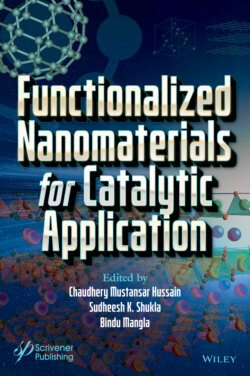Читать книгу Functionalized Nanomaterials for Catalytic Application - Группа авторов - Страница 21
1.5.1.2 Fullerene-Based FNMs
ОглавлениеFNMs of fullerene with exceptional features to modify the strength, stability, photocatalytic ability, and electron (e−) affinity have made attractions as nanocatalyst for photo-degradation of contaminants in water sources [134]. Strong absorptions were seen in the UV belt, while moderate absorptions are seen in visible, functionalization enhances the behavior of electron transference required for photocatalytic action [135]. New novel FNM (covalently bonded) Zn-Porphyrin functionalized/TiO2 synthesized was used to degrade the contaminants MB and phenol, where ·O2−, ·OH and ·OOH may participate in the reaction kinetics. Appropriate small band difference between FNM’s LUMO and TiO2’s CB that leads to the electron transference was the cause for degradation according to authors Regulska, E. et al. [136]. In another situation, the authors Chai, B. et al. degraded Rh B by fullerene modified nanocomposites of g-C3N4 (C60/g-C3N4) photocatalytically, where the efficiency was because of charge separation of photo e− electrons and h+ holes in the FNM [137]. In the same way, poly-hydroxy fullerenes (PHF)/TiO2 as PC were found to be effective for decomposition Procion (a red-dye). The molecular interactions between the two were a simple electrostatic force that enabled the composite to undergo surface modification [138]. Fullerene FNM with silanes was proved for its effective photocatalytic activity on phenols for oxidative decomposition [139]. C70- TiO2 hybridized FNMs were proved stable for its photocatalytic behavior for five recycle runs while decomposing sulfathiazole (sulfonamides drug) a powerful antibiotic [140].
